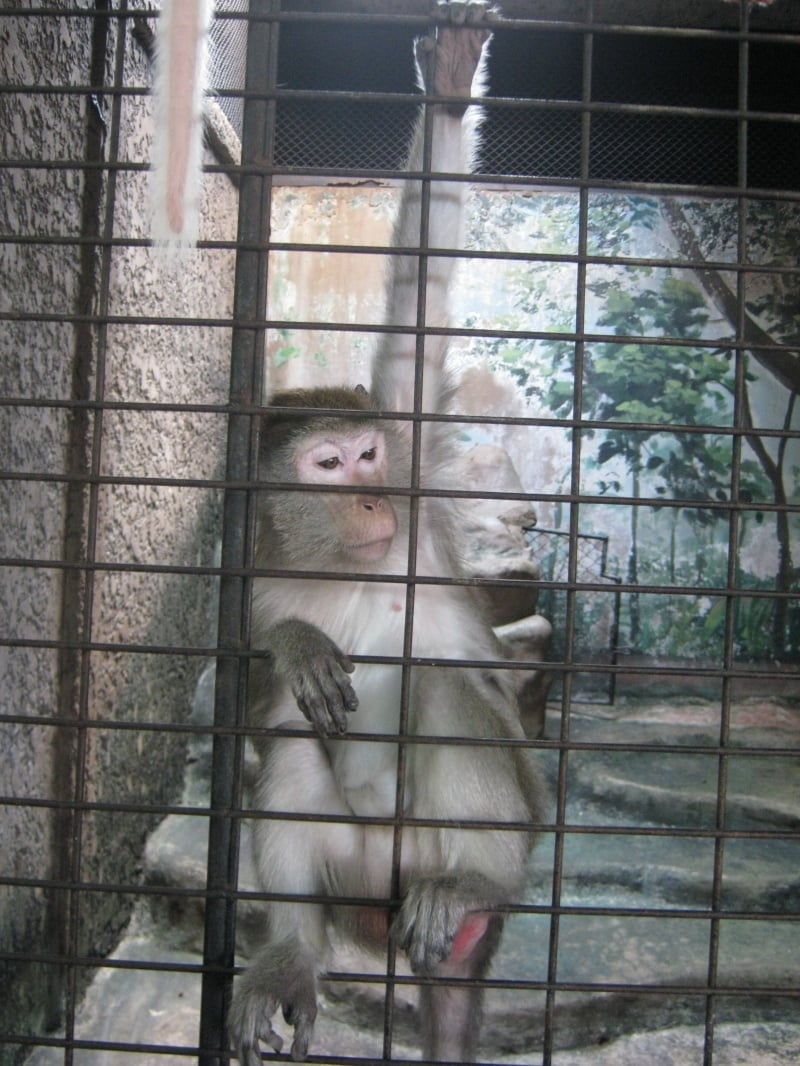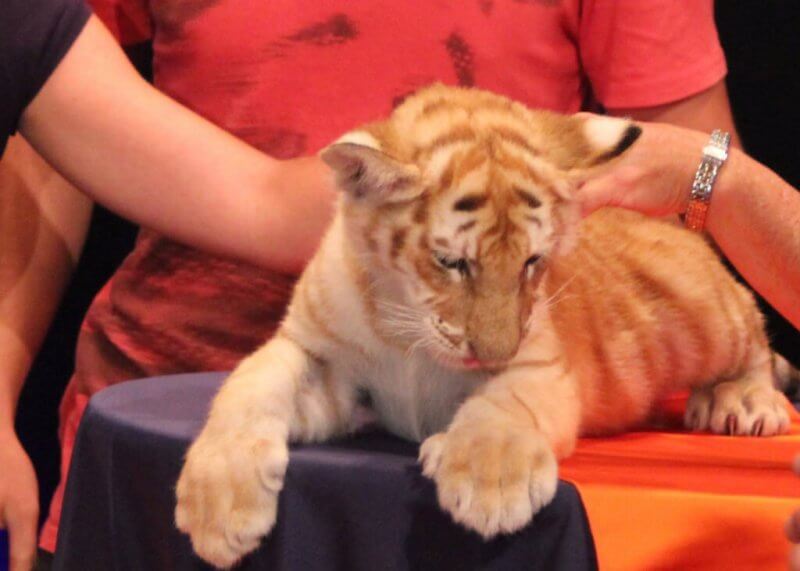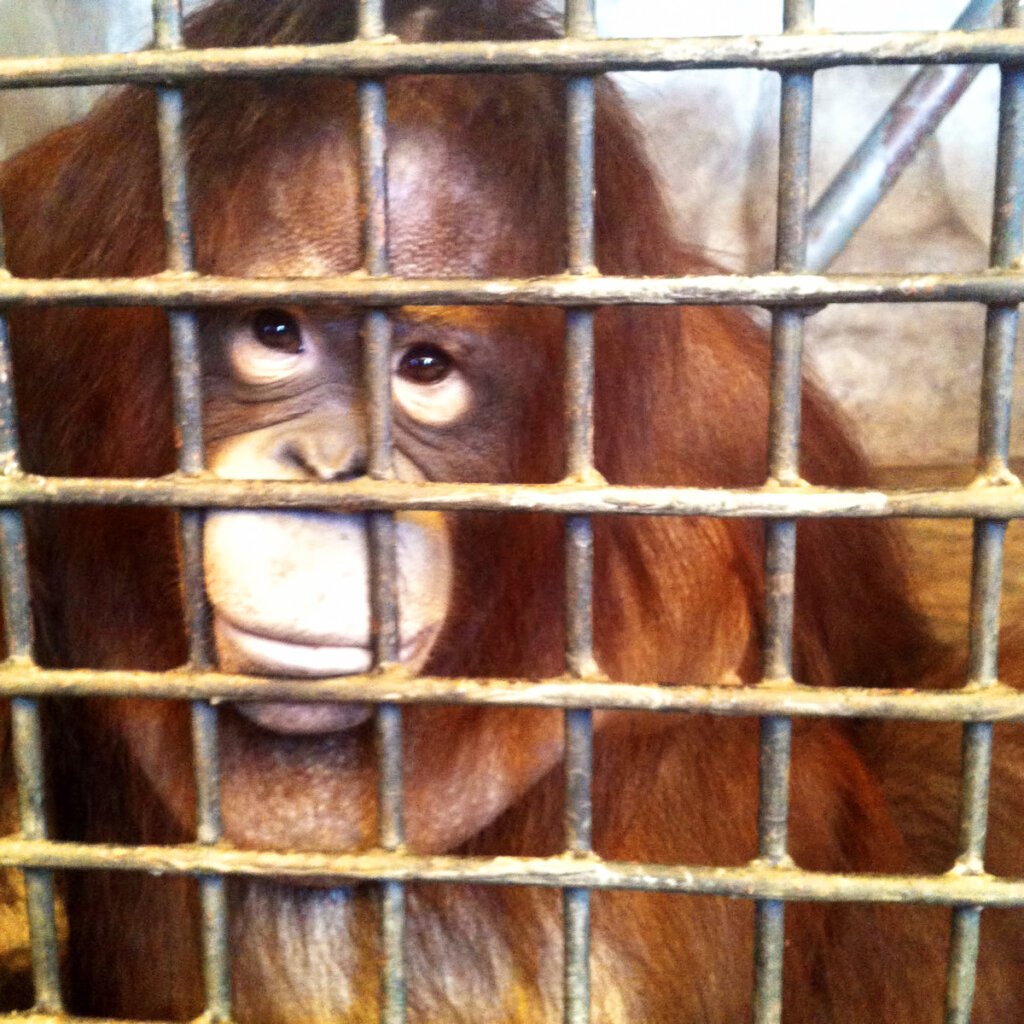
Sanctuary or Sham? Here’s How to Tell
For people who care about animals and want to support rescue efforts, sanctuaries can be an appealing and compassionate alternative to zoos.
However, the animal-entertainment industry is catching on, and many cruel zoos and breeding facilities are now marketing their animal prisons as “sanctuaries” or “rescues” and claiming to support species conservation in order to attract customers.
Don’t fall victim to these deceptive ploys. Asking a few simple questions can usually help you determine whether a facility is helping or exploiting animals.
You can easily find answers to these questions by browsing the facility’s website and social media pages before visiting:
1. How are animals housed?
Reputable sanctuaries make every effort to replicate an animal’s natural habitat. Animals should share their space with suitable partners who can provide companionship and emotional stimulation. Cramped pens with concrete floors and chain-link fences are red flags.

2. What kinds of enrichment are offered?
Habitats should offer multiple outlets for physical stimulation, such as expansive structures for chimpanzees to climb, ponds or pools for bears to bathe and splash in, and large fields for grazing. The aim of enrichment is to provide comfort for the animals—not to create an appealing scene for visitors, as is the case with many zoos.

3. Are Animals’ Emotional Needs Met?
In addition to physical enrichment, the emotional needs of the animals should be a top priority. Animals should be placed with compatible companions of the same species, as doing so allows them to use their natural social abilities to form relationships, herds, and packs. In many true sanctuaries, the animal residents act as fellow “rehabilitators” who teach newcomers who have been abused how to get back in touch with their instincts and embrace their new environment.
4. How big is the facility?
Depending on the specific needs of their species, animals should be given ample horizontal and vertical space to explore, roam, climb, and forage, among other types of natural behaviour. And sanctuaries never take their inhabitants out on the road for public display—instead, animals spend their days in a comfortable and stimulating environment with minimal human interference.
5. Are visitors allowed to touch or hold animals?
No reputable wild- or exotic-animal (big cats, bears, primates, wolves) sanctuary allows any kind of hands-on interaction, and that includes posing for photos with animals. Such interactions are disruptive and frightening for them—and endanger both them and the visitors. Animals are not props.
However, most sanctuaries that care for domesticated and rescued farmed animals do allow visitors to get up close and personal with willing residents—and that’s a wonderful thing.

6. How are animals acquired?
Countless animals are discarded by private owners who can’t provide adequate care as well as circuses, roadside zoos, laboratories, and other exploitative industries. Sanctuaries provide animals with a permanent home until the day they die. They don’t trade, borrow, or loan animals.
Because they have limited funds, most try never to reward an abuser by buying an animal and will do so only in the most desperate of circumstances—provided that the abuser guarantees never to acquire another animal of that species again. Animals who call a sanctuary their home likely had a rough start, and staff will be eager to tell you their individual stories so that you can learn more about the various industries that are harmful to animals.
7. Does the facility breed animals?
Reputable sanctuaries do not breed animals because they know that doing so depletes their already limited resources to rescue others in need.
8. What is the facility’s visitation policy?
Most reputable sanctuaries have limited public visitation times in order to minimise the impact on the animal residents. Typically, this means that if the park is open to the public, visits are allowed on specific days and times only, and you may need to book a visit in advance.
9. Are they accredited?
Travelling overseas? Check whether a sanctuary is accredited by the Global Federation of Animal Sanctuaries (GFAS) before deciding to visit. GFAS is an accrediting organisation that requires member sanctuaries to observe a strict code of ethics and meet animal-welfare standards that far exceed the minimal ones which are law in most countries.
Sanctuaries accredited by GFAS never breed or sell animals, and they allow rescued exotic animals to live out the rest of their lives in peaceful, spacious, natural habitats with members of their own species.
10. Are animals exhibiting stereotypic behavior?
Keep an eye out for signs of distress and “zoochosis”—a captivity-induced mental illness. Do animals sway their heads, pace, or pull out their own fur? Do they appear lethargic or intimidated by staff or other animals? Are they isolated?
And one final tip: Trust your gut.
If you’re concerned that a particular facility might be mistreating animals for the sake of profit, ask more questions. If you’re already there, express your concerns, ask for a refund, and leave. Report what you saw to PETA, and let your friends and family know never to visit.
Above all, it’s important to recognise that all living beings deserve a peaceful space without interference from gawking tourists. A true sanctuary places the needs and desires of its inhabitants over those of paying visitors and provides a lifetime of excellent care.
Never attend a zoo or pseudo-sanctuary. Ticket sales fund cruelty, and no visit is worth the lifetime of suffering that animals endure when they’re stripped of their dignity and everything that’s natural and important to them. Share this article and explain to your friends and family why animals don’t belong in captivity and why you don’t support cruelty.
Take Action
Help Animals in 2025: Renew Your PETA Membership!

